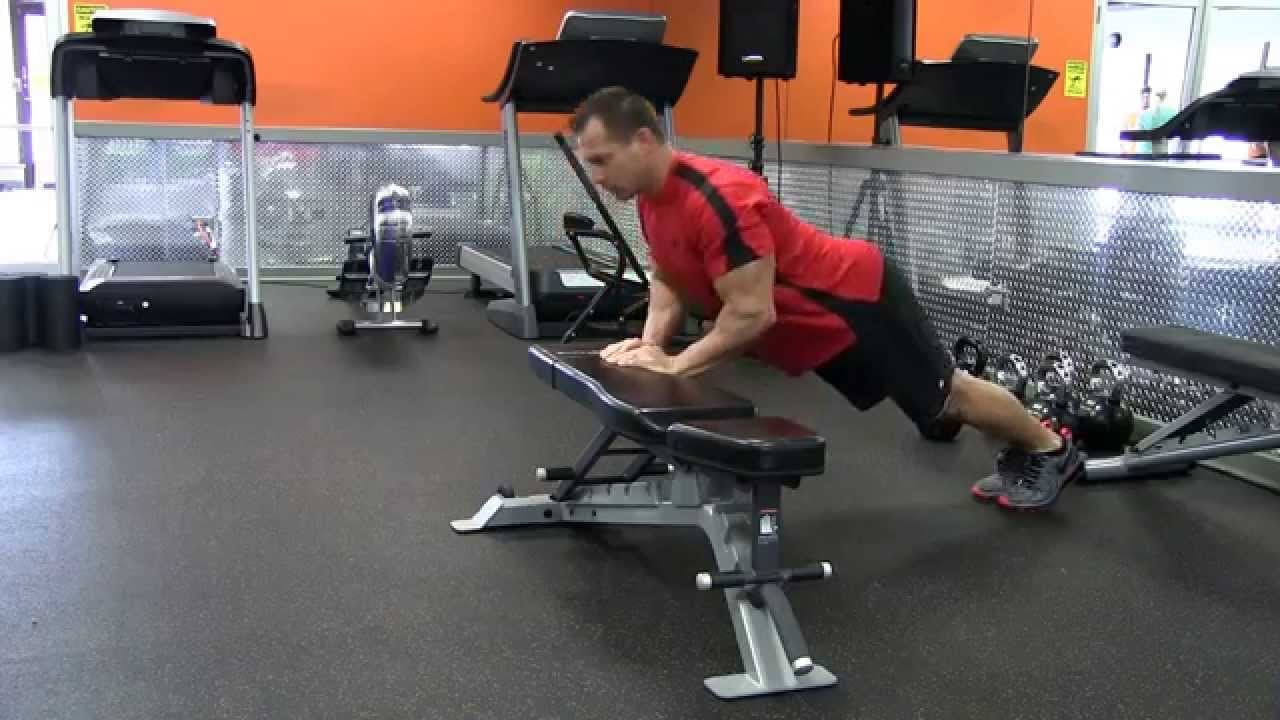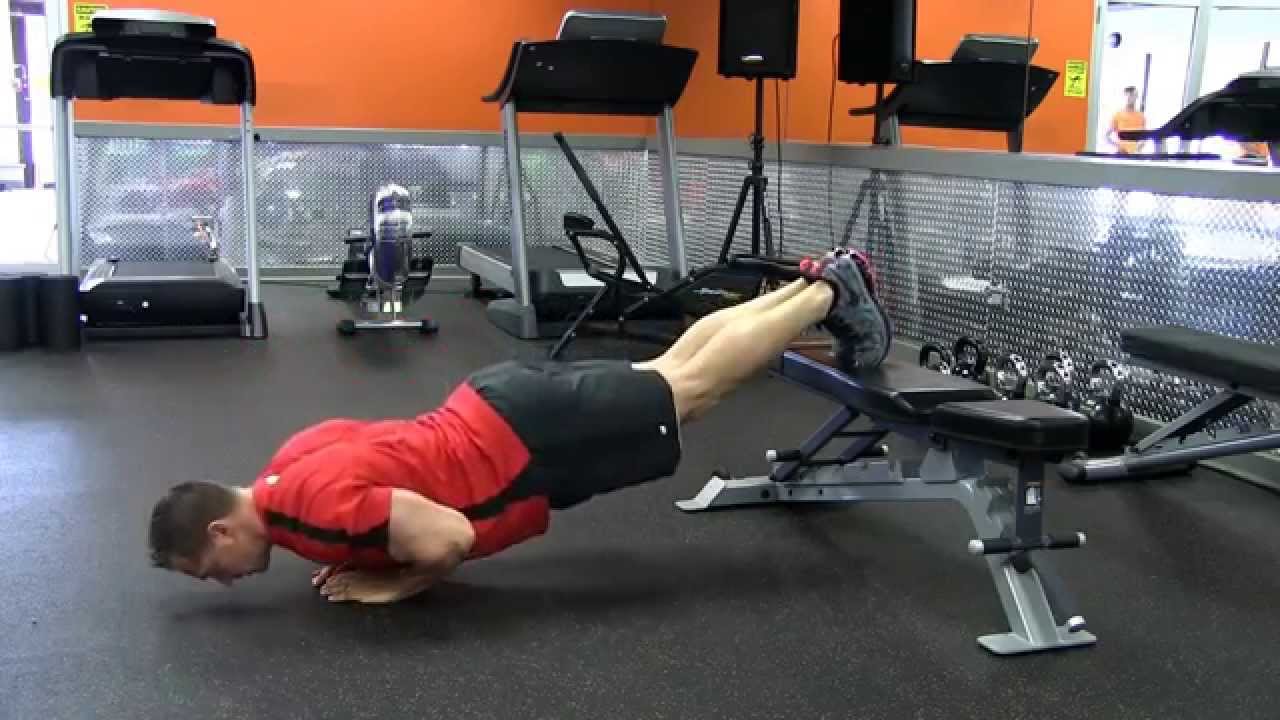Diamond push-ups are often referred to as triangular or tricep push-ups. It is one of the more challenging variations of standard push up because of the narrower support base.
When you bring your hands together in a diamond shape, you shift much of the workload onto your triceps. You will feel it in your chest and shoulders as well, but this hand position seriously boosts tricep activation. It’s good for both the upper and lower body.
What’s great is that you don’t need any equipment. Whether you’re at home, at the gym, or traveling, diamond push-ups are an easy way to amp up your bodyweight training.
I’ve found that adding diamond push-ups to my routine improves arm definition and strengthens the shoulder stabilizer muscles.
Want to take your gains to the next level? Discover your daily calorie needs with our free TDEE calculator
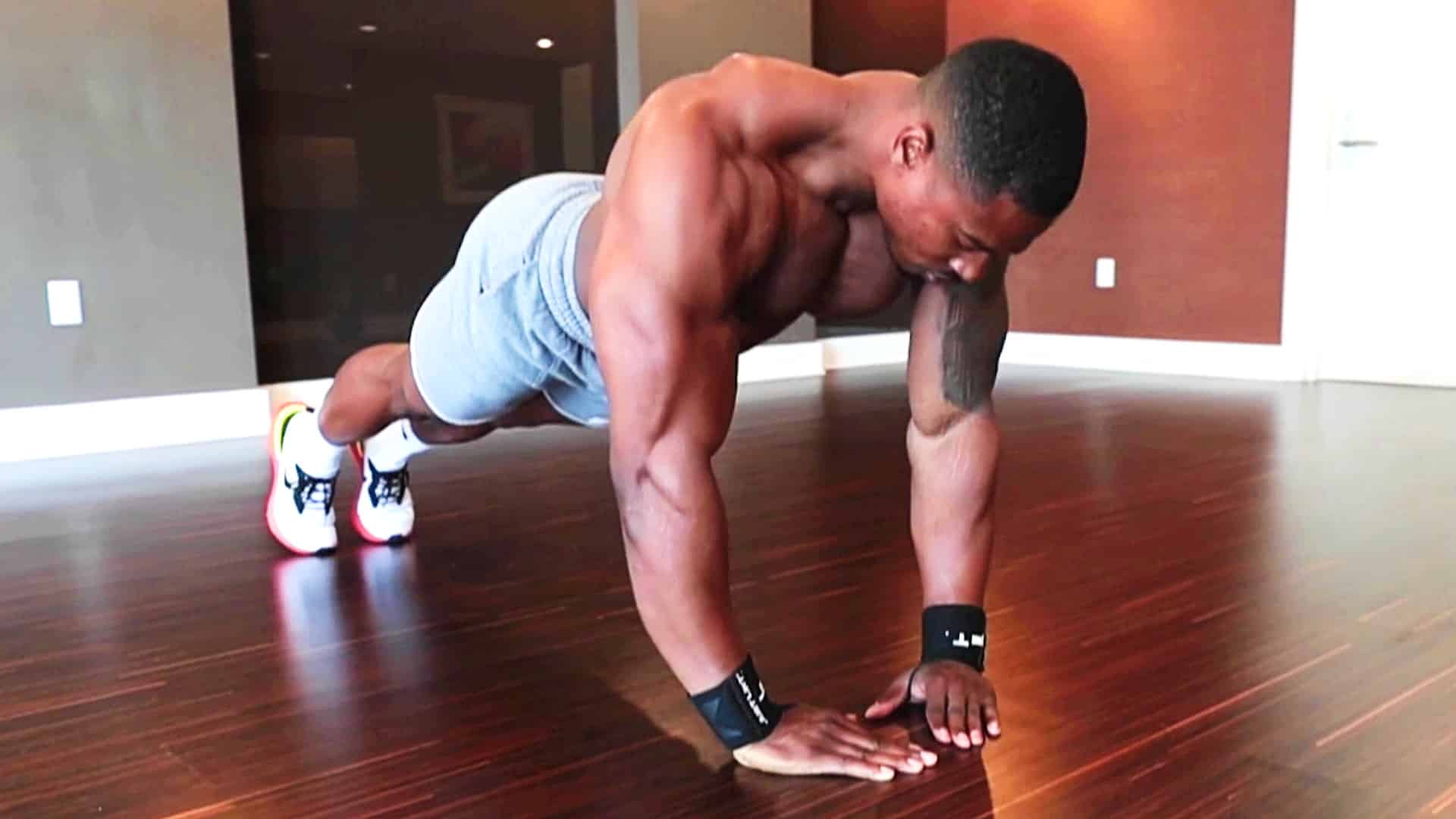
- Diamond Push-Ups Muscles Worked
- How To Do Diamond Push Up
- Proper Form and Tips
- Diamond Push-up Variations
- 1. Diamond Push-Up on Knees
- 2. Incline Diamond Push Up
- 3. Decline Diamond Push-Ups
- 4. Dumbbell Diamond Push-ups
- Benefits of the Diamond Push-up
- 1. Increased Triceps Activation
- 2. Improves Core Strength and Stability
- 3. Improve Upper Body Strength
- 4. Burn Calories
- 5. Improving Posture
- 5. Improve Bone Density and Overall health
- References
Diamond Push-Ups Muscles Worked
Several muscles work together to execute the diamond push-up.
- During Diamond Push-Ups, the primary muscle worked is the tricep.
- The secondary muscles include the pectoralis (chest), deltoids (shoulders), and serratus anterior.
- Aside from the upper extremity muscles, Diamond push-ups generally engage the core, glutes, hamstrings, quadriceps, femoris, and calf muscles as well.

How To Do Diamond Push Up
The Diamond push-up is a more advanced variation of the classic push-up. To practice it, bring your hands too close together to form a diamond or triangle shape below your chest.
- Start with a high plank position on the floor, with your hands directly under your shoulders.
- Move your hands closer together so that the tips of your thumbs and index fingers touch. This will make a diamond shape with your hand.
- Now, extend your arms to elevate your body and form a straight line from your head to your feet.
- Pull your belly button towards the spine to engage your core muscles.
- Bend your elbows and lower your body towards the ground.
- As you lower your body, ensure your hands almost touch the diamond shape.
- Ensure your back stays straight and your hips line up with your shoulders.
- Take a brief moment when your chest is near the diamond shape.
- Then, push through your palms to extend your arms and return to the starting position. Fully extend your elbows, but avoid locking them.
Proper Form and Tips
- It is important not to allow the hands to go too far forward. Positioning the hands superiorly to the shoulders may cause excessive stress on other muscles and joints.
- Avoid letting the elbows flare out, or point out to the side. The angle between the torso and the arm must be at around 45 degrees.
- It is important to keep the body in a straight line throughout the activity. The hips should be level with the shoulders from start to finish.
- Performing diamond push-ups too quickly can compromise your form and reduce the time under tension, which can limit the muscle-building benefits. Focus on controlled, deliberate movements, and aim for a smooth and controlled pace throughout each repetition.
- Diamond push-ups place more load on the elbows than conventional push-ups. To avoid injury, it is vital to master a regular push-up and slowly progress by bringing the hands closer together over a few weeks.
- Don’t lock your arms on the way up.
- Squeeze your glutes and engage your core before moving into the push-up
- Starting with 2-3 sets of 8-15 reps is a good baseline for overall fitness and strength improvement. This range allows you to focus on getting right and building strength.
- To build bigger and stronger muscles, you can do harder versions of diamond push-ups. Try to do 3-4 sets of 15-20 reps with these harder variations.
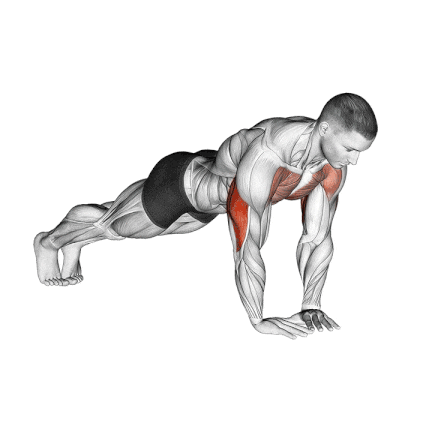
To Stay Motivated: 150+ Gym Workout Motivational Quotes To Stay Fit
Diamond Push-up Variations
You can try one of these variations once you master the diamond push-up.
1. Diamond Push-Up on Knees
The knee diamond push-up, also known as a modified Diamond push-up, is a brilliant beginner exercise for developing the triceps brachii.
Once the diamond push-up on knees becomes easy, graduate to performing the exercise on your hands and forefeet.
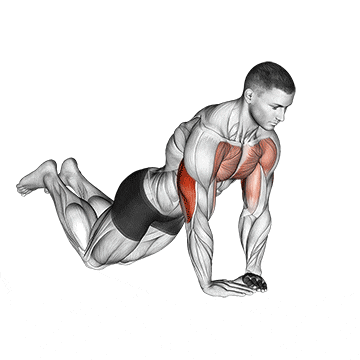
How to do
- Get into a push-up position, supporting your body on your hands and knees instead of on your hands and forefeet.
- Your hands should be positioned so that your thumbs and index fingers form a diamond shape.
- Keep your body straight and rigid and your elbows close to your body, and inhale as you lower your chest to the floor.
- Exhale as you extend your elbows and push your body back up to the starting position.
2. Incline Diamond Push Up
For the next degree of difficulty, place the box or chair to support your arms while you perform diamond push-ups. You use more of your lower chest, shoulder, and tricep muscles when doing incline diamond push-ups.
The exercise reduces the amount of body weight you lift and puts less stress on your elbows. It’s perfect for beginners and pros who want to strengthen their upper bodies.
3. Decline Diamond Push-Ups
Decline Diamond Push-ups are similar to normal push-ups, but with your legs on a bench. Also, when you lift your lower body off the ground, it makes your body work harder than when you do a push-up on the ground.
Decline diamond push-ups are harder than standard push-ups because of the angle at which they have to be done. The decline position engages more of the upper chest, shoulder muscles, and triceps.
This makes the diamond decline push-up harder than the standard diamond push-up.
How to do
- Elevate your feet by placing them on a bench, chair, or box.
- Get into a push-up position and place your hands in a diamond shape.
- Keep your elbows close to your body, bend your arms and lower your body until your head reaches the floor.
- Push back up to the starting position
4. Dumbbell Diamond Push-ups
It is commonly referred to as dumbbell push-ups, a variant of push-ups that entails placing the hands together in a diamond shape on the ends of the dumbbells.
This variation emphasizes the triceps and inner chest muscles more heavily, which can help improve arm definition and upper body strength.
Because the dumbbells are not as stable as the hands, they require more core stability and balance.
How to Do
- Place the dumbbells on the floor in a way that they form an A shape.
- Engage your core and keep your body straight as you lower your chest down towards the dumbbells.
- Keep your elbows close to your body as you lower down.
- Once your chest touches the dumbbells, press back up to the starting position, fully extending your arms.
Benefits of the Diamond Push-up
Although the diamond push-up is a bodyweight exercise that does not use equipment, it still has several benefits.
1. Increased Triceps Activation
The diamond push-up is great for developing the triceps brachii. In one classic study by the American Council on Exercise (ACE) that compared the effectiveness of triceps exercises, the diamond push-up came first. The dumbbell kickback came second and the bench dip came third.
2. Improves Core Strength and Stability
To maintain balance, the exercise recruits the core muscles, specifically those that function in trunk rotation, such as the external and internal obliques. Recruitment of core muscles for maintaining balance leads to an improvement in both strength and stability.
3. Improve Upper Body Strength
It’s no wonder that push-ups are a serious way to challenge your upper body. Push-ups are a great way to strengthen your pectoral muscles, arms, shoulder muscles, and even some of your upper back muscles.
It works for multiple muscle groups, making it a great multi-joint exercise for improving upper body strength.
4. Burn Calories
Doing Diamond push-ups can be a powerful full-body workout and help to burn more calories. They use up a lot of energy quickly because the movements require large muscle groups to lift and hold much of the body’s weight.
Depending on how you do your push-ups, they can help you work your cardio-respiratory system. You don’t need to do dozens of repetitions to feel your heart rate and breathing rate increase.
Depending on your level, don’t hesitate to take a few seconds of rest between sets to catch your breath.
5. Improving Posture
These days, we spend most of our time sitting and/or in front of a screen. This contributes to hunching your shoulders and rounding your spine, which is a characteristic of poor posture.
Luckily, when done correctly, push-ups can help correct this problem by re-teaching your body how to position itself properly.
That’s because a good push-up involves engaging the shoulder blades and rhomboids (two commonly neglected mid-back muscles) without overusing the upper shoulder and neck muscles (which many of us overuse in everyday life anyway, especially when we’re stressed).
5. Improve Bone Density and Overall health
Like most resistance exercises (here, your body weight), push-ups help strengthen bone density.
Regular practice of the diamond push-up can, therefore, improve overall health since muscle strength helps to improve bone strength, regulate blood sugar and blood pressure, and enable everyday mobility.
References
- Contreras, Bret & Schoenfeld, Brad & Mike, Jonathan & Tiryaki-Sonmez, Raziye & Cronin, John & Vaino, Elsbeth. (2012). The Biomechanics of the Push-up. Strength and Conditioning Journal. 34. 41-46. 10.1519/SSC.0b013e31826d877b.
- Kim YS, Kim DY, Ha MS. Effect of the push-up exercise at different palmar width on muscle activities. J Phys Ther Sci. 2016;28(2):446-449. doi:10.1589/jpts.28.446

Manish is a NASM-certified fitness and nutrition coach with over 10 years of experience in weight lifting and fat loss fitness coaching. He specializes in gym-based training and has a lot of knowledge about exercise, lifting technique, biomechanics, and more.
Through “Fit Life Regime,” he generously shares the insights he’s gained over a decade in the field. His goal is to equip others with the knowledge to start their own fitness journey.

